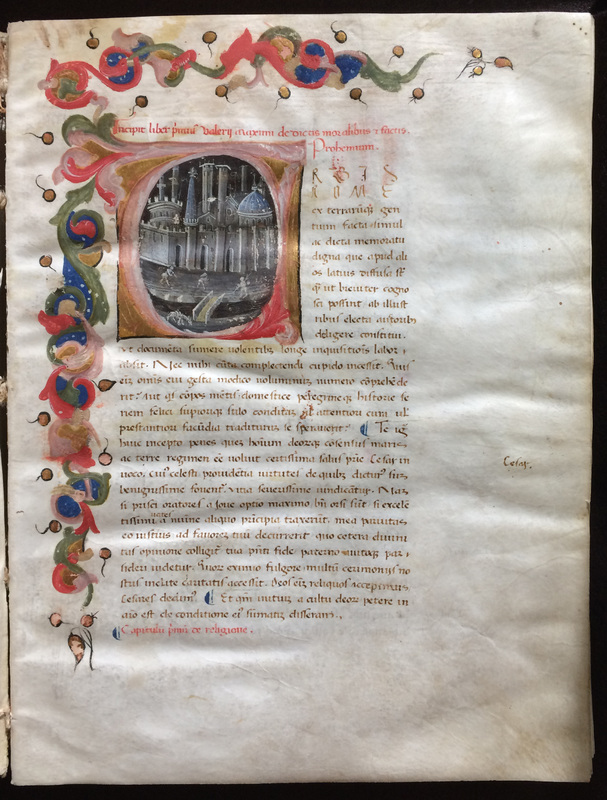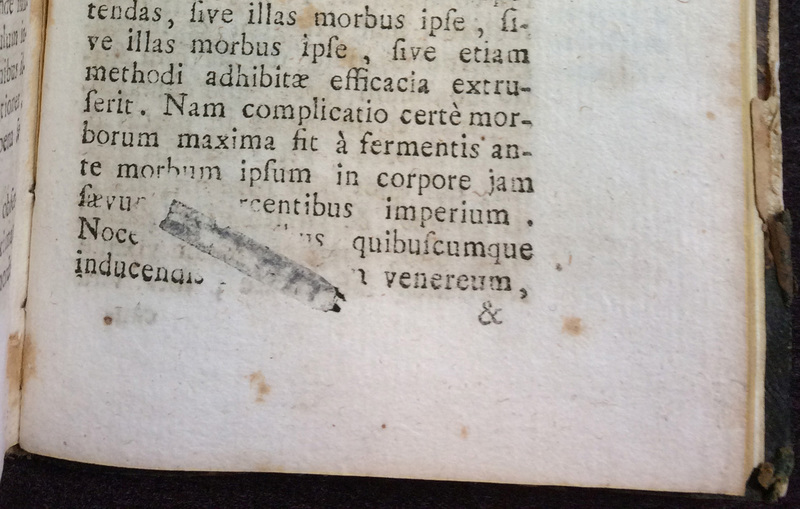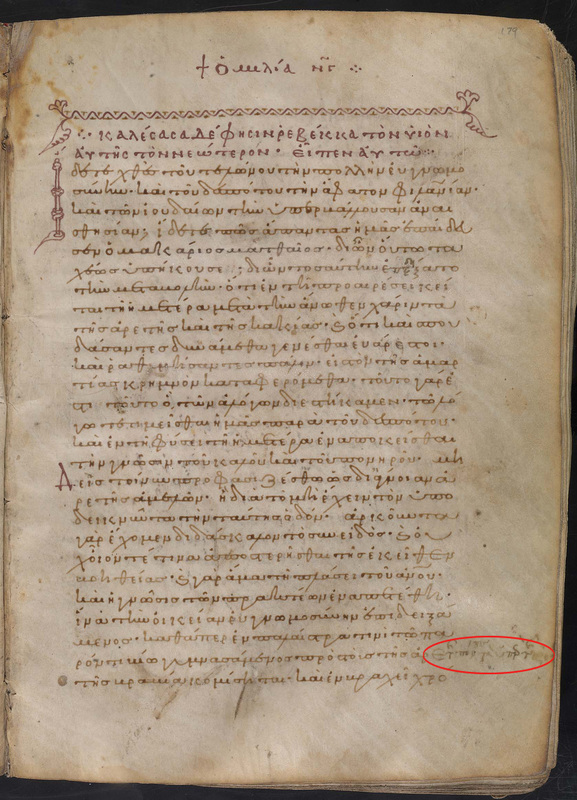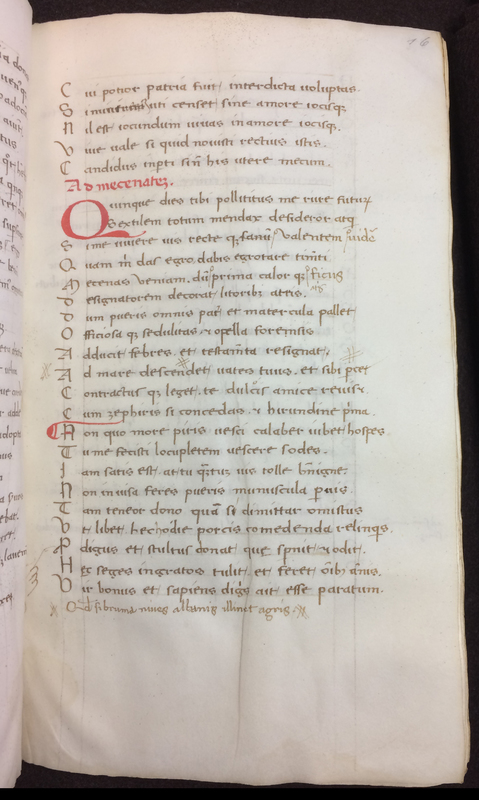Marks of Correction: How to fix a Manuscript Line
Here is a fascinating example of a diligent scribe supplying a few words that he had overlooked when copying the manuscript. The page in question, and on display below, is part of an eleventh-century Greek manuscript containing John Chrysostom's 67 Homilies on the Book of Genesis. This codex was copied in St. Nicholas of Anapausas, one of the so-called Meteora monasteries, a designation describing a group of monasteries built on high pinnacles of rocks in an area located in Thessaly. Can you see the added words in the line before the last?
The reader has added the following letters and words, some of which are abbreviated: ετ(ῆς) πόνους τὰ ὑπὲρ τ(ῆς). They were part of the text as Chrysostom originally wrote them but, again, the scribe missed them.
The following fifteenth-century Latin manuscript offers further insight into the correcting efforts of a conciencious scribe. The manuscript in question contains Horace's Ars Poetica and Epistulae, two touchstones in the readings lists of humanists and educated readers in Early Moden Europe. The scribe has left all sorts of markings on this page as shown below. On the lower left margin, see an instance of the so-called manicula, a small hand with an extended finger used to highlight a section of the text, in this case the verse starting, prodigus et stultus donat... In Latin manuscripts copied from the eleventh century onward, scribes and readers used pairs of signs to link a correction written on the margin with the respective location within the text. Accordingly, a system of signs is used in our mansucript. For example, in line 9, vide(re) should replace sanum; and in line 11, ficus should be written between du(m) and prima. More importantly, between lines 15 and 16, an entire verse should be inserted as shown in the lower margin: q(uo)dsi bruma niues albanis illinet agris.
Moreover, the scribe inserted two other missing verses after line 7, again written in the lower margin: et properare loco cessare & querere & uti/ gaudente(m) paruis(que) sodalib(us) & lare certo.

Artistic Marks from the Medieval World

Searching for Printers' Errors




